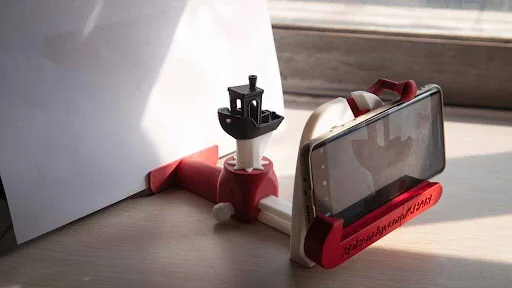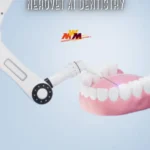For thousands of makers, the journey from “hobbyist” to “business owner” follows a predictable path. It usually starts with a single, reliable machine in a garage or spare bedroom. You buy a standard 3d printer or 3D Printed to print fun upgrades for your home or toys for your kids. Then, a friend asks to buy one. Then a stranger on the internet asks for a custom order. Before you know it, you are running an Etsy shop or a small 3D printing farm.
However, as order volume increases, new entrepreneurs quickly hit a wall: labor time.
The actual printing isn’t the problem; it’s what happens after the print finishes. If you are selling single-color prints that need to be hand-painted to look finished, or complex models that require hours of sanding to remove support scars, your profit margins are being eaten alive by manual labor.
To scale a 3D printing business or 3D Printed in 2025, the goal is “Ready-to-Ship” manufacturing. This is where upgrading to a dedicated multi-material machine transforms your workflow from a hobby into a scalable operation.
Discover a related post delivering sharper insight to complete your learning path.
The “Post-Processing” Trap
Calculated purely on material costs, 3D Printed is incredibly cheap. A $20 roll of PLA can produce hundreds of dollars worth of inventory. But this math creates a false sense of security.
If you are printing a gaming miniature that costs $0.50 in plastic but requires 30 minutes of hand-painting to be sellable, you aren’t selling a product; you are selling your time. And unlike a machine, your time is not scalable. You cannot paint 24 hours a day.
This is why “multi-color” printing is shifting from an artistic novelty to a business necessity. By printing a product in its final colors—using white filament for the body, black for the eyes, and red for the accents—you remove the painting step entirely. The part comes off the build plate, gets packed in a box, and ships.
Why “Waste” Kills Profit Margins
Until recently, moving to multi-color printing was a risky financial move for small businesses due to waste.
Most consumer multi-color attachments work by using a single nozzle. To change colors, the printer has to cut the filament, retract it, and purge the old color out. This generates “purge blocks” or “filament poop.” For a colorful dragon or keychain, you might waste 200g of filament to print a 100g object.
For a hobbyist, that’s annoying. For a business, that is a 200% tax on your materials.
This is where the new wave of hardware, specifically the independent toolhead color 3d printer, changes the economics. Modern industrial-grade desktop machines use separate toolheads for each filament. When it’s time to switch from red to blue, the printer simply swaps heads.
There is no purging. There is no waste chute filling up with expensive plastic.
By eliminating purge waste, you are not just saving the environment; you are effectively lowering your Cost Of Goods Sold (COGS). Every gram of filament you buy actually goes into a product that generates revenue.
The Multi-Material Advantage: Supports
There is another hidden efficiency unlock: Soluble Supports.
Many profitable 3D printed items (complex cosplay props, mechanical parts, articulated figures) require support structures. Removing these supports from a single-material print often leaves rough surfaces that require sanding.
With an independent dual-extrusion (IDEX) or tool-changing system, you can print the object in PLA and the supports in a specialized “breakaway” or soluble interface material. These supports snap off cleanly or dissolve in water, leaving a pristine surface underneath.
This means you can print complex geometries that look injection-molded right out of the box, without spending your evenings sanding plastic dust in your garage.
Scaling Up Smart
If you are still running a farm of basic monochrome printers, you are likely capping your own growth. You can only sand and paint so fast.
Transitioning to a workflow that prioritizes “finished” prints allows you to focus on what actually grows your business: designing new products and marketing your store. By investing in a machine that handles the complexity for you—managing colors and materials without the waste—you turn your desktop into a true micro-factory.
The future of the maker business isn’t about working harder on every print; it’s about letting the machine do the work so you can ship faster.
Unlock more value through posts that expand your perspective with every click.






